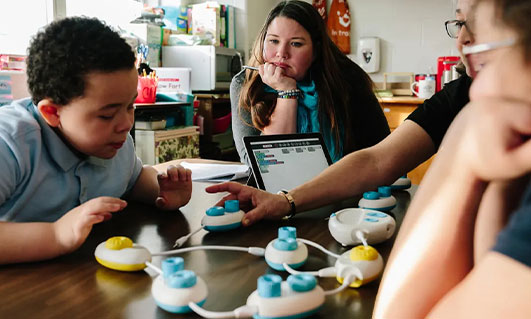
Education is a fundamental right, yet visually impaired students often face significant barriers that hinder their academic success. These disparities can stem from various factors, including inadequate resources, insufficient training for educators, and a lack of inclusive practices in schools. This blog explores the struggles visually impaired students encounter in the educational system and highlights the urgent need for reform.
1. Access to Resources
One of the primary challenges visually impaired students face is limited access to educational resources. Traditional textbooks are often not available in accessible formats, such as Braille or audio. Even when these formats are available, there can be delays in obtaining them, leaving students at a disadvantage compared to their sighted peers. Additionally, technology designed for the visually impaired, such as screen readers and Braille displays, may not be universally available or properly integrated into the classroom.
2. Lack of Trained Educators
Teachers play a critical role in the academic success of their students. However, many educators lack the training necessary to effectively support visually impaired students. Without proper training in teaching strategies and assistive technologies, teachers may struggle to create an inclusive learning environment. This lack of expertise can lead to misunderstandings about the capabilities of visually impaired students, resulting in lowered expectations and missed opportunities for engagement.
3. Inadequate Curriculum Adaptation
The curriculum is often designed with sighted students in mind, leaving visually impaired students to adapt in ways that can hinder their learning. Subjects like science and mathematics may present unique challenges when hands-on experiments or visual aids are a core part of instruction. While some schools attempt to modify the curriculum, these adaptations may not always align with the educational standards required for visually impaired students to thrive.
4. Social Isolation
Beyond academic challenges, visually impaired students often experience social isolation in school settings. The inability to participate in visual-based activities can limit their interactions with peers, affecting their social development. This isolation can lead to feelings of loneliness and a lack of belonging, which can further impact their overall educational experience.
5. Transition to Higher Education
The transition from secondary education to higher education presents additional hurdles for visually impaired students. Many colleges and universities are not fully equipped to accommodate students with visual impairments, leading to a lack of support services. This can deter visually impaired students from pursuing higher education, ultimately limiting their career opportunities and potential.
6. Advocacy and Support
Addressing these disparities requires concerted efforts from educators, policymakers, and the community. Advocacy plays a vital role in promoting inclusive education practices and ensuring that visually impaired students receive the necessary resources and support. Organizations dedicated to the rights of people with disabilities can help raise awareness and provide guidance to schools on best practices for inclusion.
7. The Role of Technology
Advancements in technology offer hope for improving the educational experiences of visually impaired students. Innovative tools such as voice recognition software, mobile applications, and virtual reality can enhance learning opportunities. However, these technologies must be integrated into the classroom and accessible to all students to bridge the educational gap.
Conclusion
The struggles of visually impaired students in education highlight significant disparities that must be addressed. By improving access to resources, training educators, adapting curricula, and fostering an inclusive environment, we can create a more equitable educational landscape. It is essential for society to recognize the potential of visually impaired students and work collaboratively to break down the barriers that hinder their academic success. Only then can we ensure that all students, regardless of their abilities, have the opportunity to thrive in an inclusive and supportive educational system.





